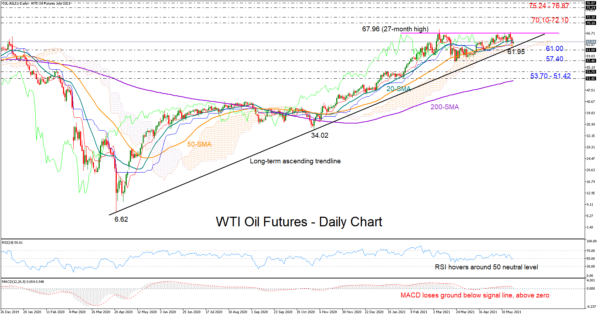WTI oil futures for July delivery tumbled to an almost one-month low of 61.95 on Wednesday following the rejection near the 66.98 level. The decline, however, was not sturdy enough to send the price below the squeezed Ichimoku cloud and the one-year-old ascending trendline drawn from the 2020 lows, keeping some optimism intact.
As regards the price momentum, the RSI and the MACD suggest a neutral-to-bearish bias for short-term trading, as the former is hovering marginally below its 50 neutral level and the latter is decelerating below its red signal line but within the positive area.
Nevertheless, sellers may not take much notice unless the price violates the trendline and the cloud below the 61.00 level. If that is the case, the downfall could last until the tough support region of 57.40, where any break lower would undermine the long-term uptrend, activating a new bearish round towards January’s congested zone of 53.70 – 51.42 and the 200-day simple moving average (SMA) slightly beneath.
Alternatively, only a decisive close above the resistance bar of 66.60 would give the lead to the bulls. Such an action could initially stabilize inside the 70.10 – 72.10 area before stretching towards the 2018 peaks registered within the 75.24 – 76.87 zone.
In brief, WTI oil futures remain indecisive between a supportive trendline and a resistance bar, despite Wednesday’s downside correction. A forceful step below 61.00 or above 66.60 could direct the market accordingly.














